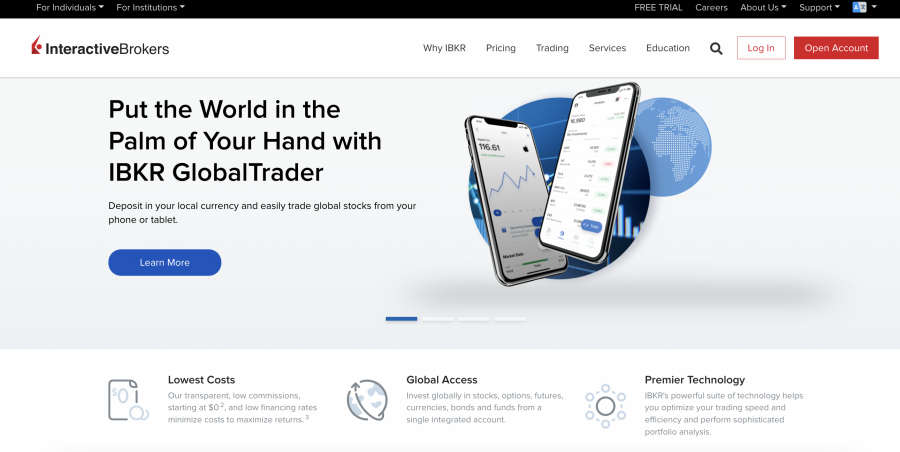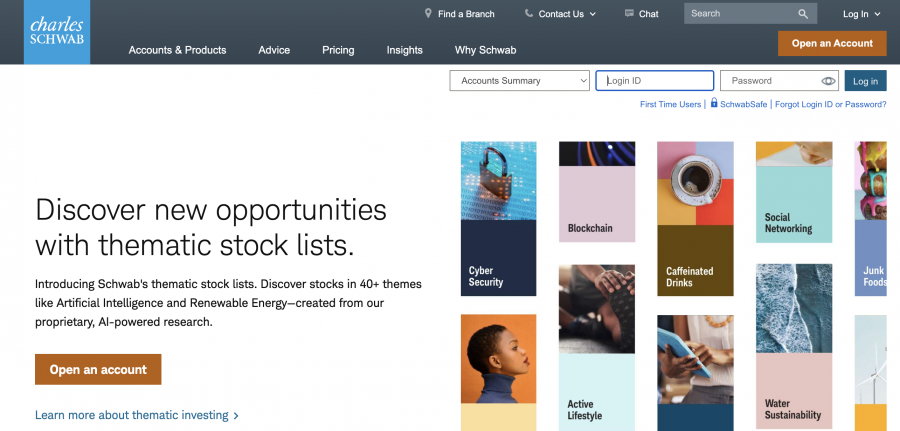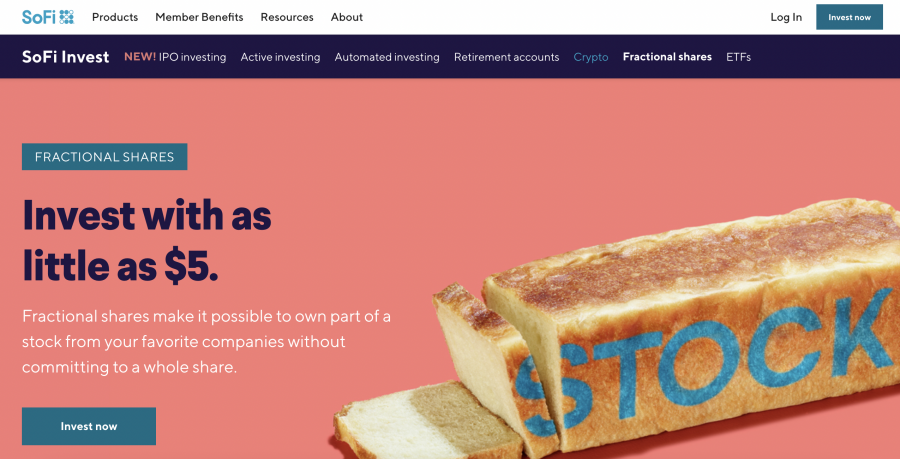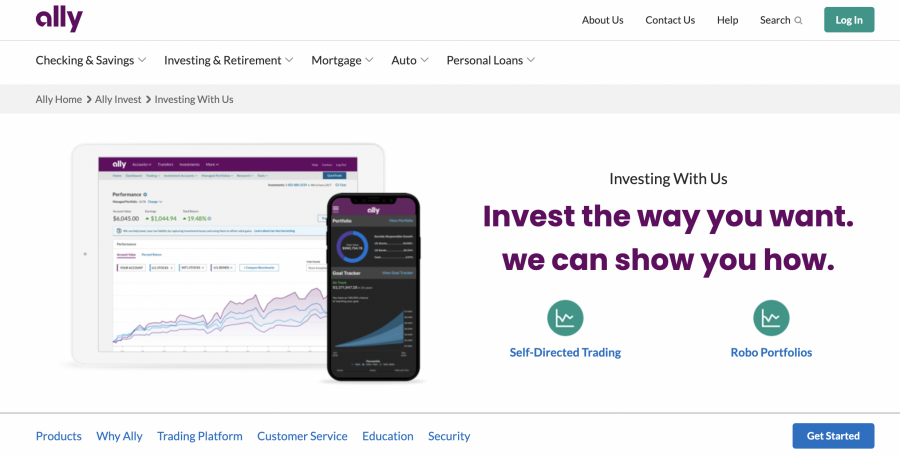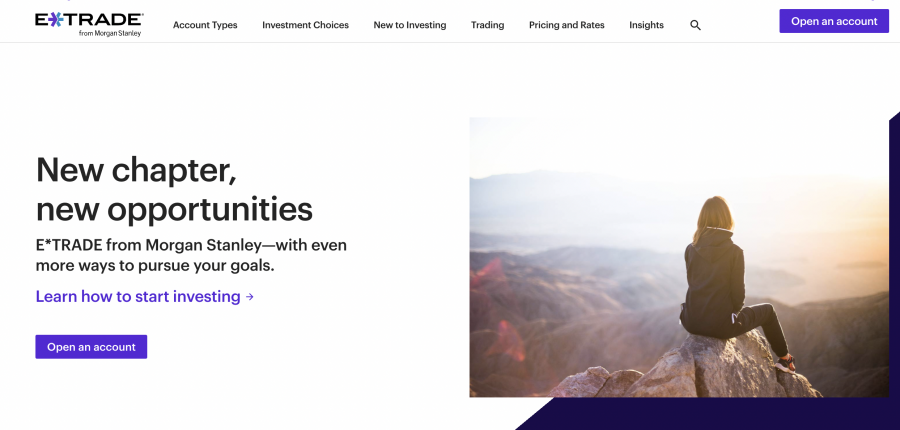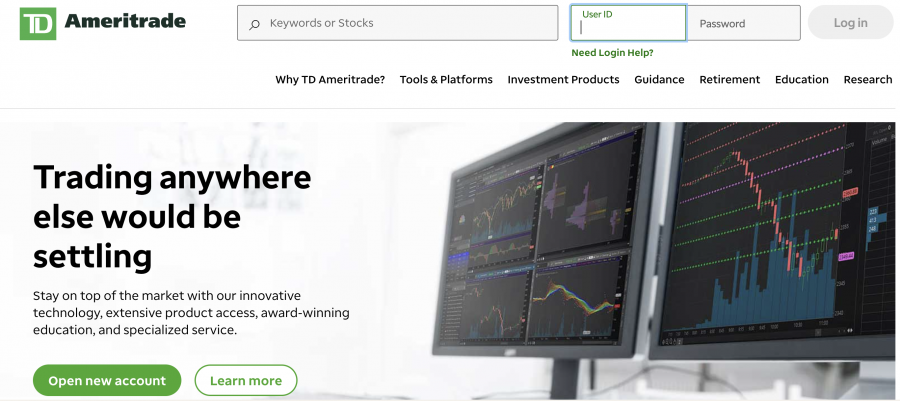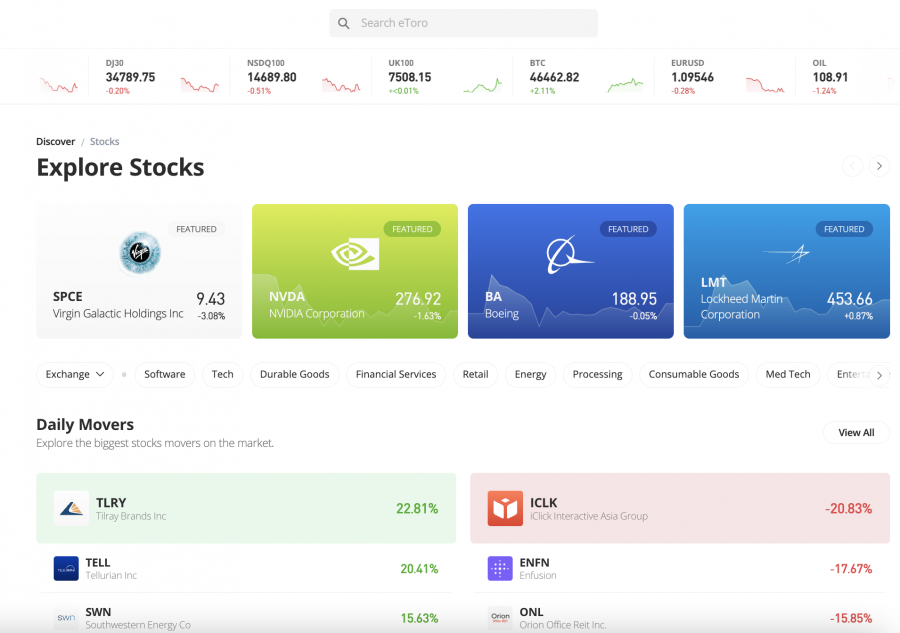If you’re looking to buy stocks online – your first task is choosing a suitable broker. The popular stock brokers in this space offer low fees, plenty of supported markets, and the ability to buy fractional shares.
In this guide on buying stocks with a regulated broker in 2025 – we review some of the biggest brokers in the market.
To assess where to buy stocks for your skillset and financial goals – we review the above brokers further down.
Key Takeaways:
- Online brokers simplify stock trading, offering tools like fractional shares, zero-commission trades, and mobile apps.
- Always research brokers for fees, account minimums, and supported markets before committing.
- Diversification, understanding market trends, and avoiding panic-selling are crucial to long-term success.
- Fractional shares democratize access to high-value stocks, allowing small-budget investors to build robust portfolios.
- Tax implications and choosing between active or passive investing strategies are key considerations for stock investors.
Buy Stocks – Select a Stock Broker
When deciding on where to buy stocks in the US – many online platforms offer low fees and even fractional shares – meaning that you only need to invest a few dollars.
With that said, you also need to consider other key metrics – such as support for international shares and whether or not you will have access to 24/7 customer service.
Taking these crucial factors into account – below we review the 10 popular online stock brokers on the market.
1. Webull

For instance, newbies will like the simple client interface that Webull offers, alongside handy educational guides and trading tutorials. Seasoned pros, on the other hand, will appreciate the technical indicators and advanced charting features on offer.
Irrespective of your experience level, Webull allows you to buy US-listed stocks at 0% commission. There are no minimum deposit requirements to meet when opening a Webull account and all supported shares can be purchased from just $5. We also like Webull for its 0% commission stock options, cryptocurrencies, and ETFs.
If you’re looking to trade on your smartphone, Webull also offers a mobile app that has been fully optimized for iOS and Android devices.
| Minimum Deposit | $0 |
| Fractional Shares | Yes – $5 minimum |
| Pricing System | 0% commission on US-listed stocks |
| Cost of Buying Amazon Stock | Spread only |
Your capital is at risk.
2. XTB

XTB offers CFDs for more than 2,100 stocks from around the globe. Most of the stocks in the S&P 500 and NASDAQ stock indices are available, as are many stocks from London’s FTSE index. There are no commissions on stock CFD trades and spreads can be as low as 0.3%.
XTB’s custom trading platform, xStation 5, is geared towards active stock traders. It offers advanced charting capabilities, dozens of built-in technical studies, drawing tools, alerts, and more. It’s very user-friendly and is available for both the web and mobile devices. Traders must use xStation 5 to place stock CFD trades, as XTB does not have an order entry tool outside of the trading platform.
| Minimum Deposit | $0 |
| Fractional Shares | No |
| Pricing System | 0% commission |
| Cost of Buying Amazon Stock | Spread only |
Your capital is at risk. 76% of retail investor accounts lose money when trading CFDs with this provider.
3. Interactive Brokers
Founded in 1978, Interactive Brokers is one of the largest trading platforms globally in terms of client accounts and trading volume. The platform gives you access to thousands of stocks both in the US and overseas.
When buying stocks listed in the US, you won’t be charged any trading commission. Foreign shares, however, will be charged at a premium and the specific fee will depend on the exchange. In addition to stocks, Interactive Brokers is also popular with investors that seek access to options, futures, currencies, bonds, mutual funds, and more.
For those with experience in the stock trading space, Interactive Brokers offers an advanced trading platform that comes packed with sophisticated features. This includes customizable workstations, technical indicators, and tools for high-frequency trading. Less experienced traders, however, will find the standard client portal more than sufficient.
In terms of account minimums, you can get started with any amount when opting for a standard self-directed portfolio. Moreover, deposit fees are not charged by this platform. We also like Interactive Brokers for its high-level research tools. IBKR GlobalTrader, for instance, allows you to screen suitable stocks based on a wide variety of metrics – such as P/E ratios.
| Minimum Deposit | $0 |
| Fractional Shares | Yes – $1 minimum |
| Pricing System | 0% commission on US-listed stocks |
| Cost of Buying Amazon Stock | Spread only |
4. Schwab

With that said, although Schwab offers access to plenty of international exchanges, additional fees will apply. We also like Schwab for its thematic stock lists. In a nutshell, this covers a pre-made basket of stocks across 40 different niche markets – such as cyber security, water sustainability, social networking, and even blockchain.
And, when you invest in a thematic portfolio, there are no additional fees to pay. Another popular feature offered by this platform is the Schwab Stock Slices tool. This allows you to buy fractional shares in any company listed on the S&P 500 from just $5 per trade. This means that with a capital outlay of just $100, you could buy 20 different stocks.
Schwab also offers high-level research and analysis tools. At Schwab, this includes everything from daily market updates and podcasts to investment guides and workshops. Finally, Schwab also offers tailor-made financial advice, albeit, this will come at a premium depending on your chosen plan.
| Minimum Deposit | $0 |
| Fractional Shares | Yes – $5 minimum |
| Pricing System | 0% commission on US-listed stocks |
| Cost of Buying Amazon Stock | Spread only |
5. Fidelity
Fidelity is popular with investors on a budget for its Stocks by the Slice tool – which enables fractional share purchases from just $1. This is the case with all supported stocks listed on the NYSE and NASDAQ. As such, if you’re planning to buy international stocks, fees at Fidelity will apply.
In a similar nature to Schwab, Fidelity gives you access to thousands of financial instruments outside of the stocks and shares space. This is inclusive of mutual funds, index funds, ETFs, fixed-rate bonds, and managed portfolios.
In addition to self-directed plans, this also includes retirement accounts across multiple IRAs. Fidelity provides access to financial news and guidance via a single brokerage account. You will find articles and insights published throughout the day, alongside investing ideas. You can also set up pricing alerts and access upcoming IPOs.
| Minimum Deposit | $0 |
| Fractional Shares | Yes – $1 minimum |
| Pricing System | 0% commission on US-listed stocks |
| Cost of Buying Amazon Stock | Spread only |
6. SoFi

And, notably, stocks can be bought and sold at SoFi on a commission-free basis. On the other hand, SoFi does not allow you to buy foreign stocks, which is a major drawback for those looking to achieve international diversification. Nevertheless, in addition to US-listed stocks, SoFi offers cryptocurrencies, ETFs, and access to upcoming IPOs.
SoFi also allows you to open an automated investing account – which is backed by AI. Put simply. you will need to specify your long-term financial goals and risk tolerance – and the underlying AI software will build a suitable portfolio on your behalf. We also like the fact that SoFi offers Traditional, Roth, and SEP IRAs.
| Minimum Deposit | $0 |
| Fractional Shares | Yes – $5 minimum |
| Pricing System | 0% commission on US-listed stocks |
| Cost of Buying Amazon Stock | Spread only |
7. Ally Invest
Ally Invest is another stock broker app available in the market. Available on both iOS and Android phones – the Ally Invest app allows you to register a brokerage account in minutes.
There are no fees to get started – nor do you need to meet a minimum deposit requirement. Once your Ally Invest account is set up, you can then buy thousands of US-listed stocks on a commission-free basis. However, we should note that, unlike the other stock broker companies that we have reviewed so far, Ally Invest does not support fractional shares.
Moreover, you won’t be able to buy shares listed on foreign exchanges, nor can you invest in cryptocurrencies like Bitcoin or Dogecoin. Ally Invest does, however, offer mutual funds and bonds, albeit, these investment products are not offered on a commission-free basis. Ally Invest also offers margin trading facilities – which requires a minimum balance of $2,000.
| Minimum Deposit | $0 |
| Fractional Shares | No – not supported |
| Pricing System | 0% commission on US-listed stocks |
| Cost of Buying Amazon Stock | Spread only |
8. E*TRADE
E*TRADE is another popular stock broker that is available in the market. At this popular online brokerage, you will have access to Roth, Rollover, and Traditional IRAs. If you’re not sure which IRA is right for you, E*TRADE offers plenty of guidance.
In addition to retirement accounts, E*TRADE also offers standard self-directed plans and core portfolios. The latter allows you to invest in a 100% passive manner after specifying your financial goals, albeit, this requires a minimum deposit of $500 and an annual fee of 0.30%. Self-directed plans, however, come with no account minimums or annual fees.
In terms of trading fees, E*TRADE does not charge any commissions on US-listed stocks. However, take note that fractional shares are not supported. This is also the case with US-listed stock options and ETFs. Getting started with an E*TRADE account typically takes just 10 minutes from start to finish and you can fund your stock investments with ACH or a bank wire.
| Minimum Deposit | $0 |
| Fractional Shares | No – not supported |
| Pricing System | 0% commission on US-listed stocks |
| Cost of Buying Amazon Stock | Spread only |
9. TD Ameritrade
If you’re a seasoned investor that seeks high-level stock trading tools – TD Ameritrade is one of the available brokerages to research. This trusted online broker is behind the popular thinkorswim platform – which offers everything you need to trade stocks in a professional setting.
This includes everything from fully customizable charting screens and market scanning to technical indicators and the ability to test-drive trading strategies. The thinkorswim platform is accessible online or via downloadable desktop software. TD Ameritrade also offers a mobile trading app for iOS and Android.
When it comes to pricing, TD Ameritrade is yet another online broker that offers commission-free trading on US-listed stocks, ETFs, and options. The platform also offers cryptocurrency trading, alongside forex, mutual funds, and margin facilities. For avid forex traders our convenient guide on the popular MT4 brokers in 2025 is a must read. What we also like about TD Ameritrade is that the brokerage firm offers in-person assistance and financial guidance across 175 branches.
| Minimum Deposit | $0 |
| Fractional Shares | No – not supported |
| Pricing System | 0% commission on US-listed stocks |
| Cost of Buying Amazon Stock | Spread only |
10. Robinhood
Robinhood is another popular stock trading app that is available in the market. Through its online platform and mobile app. Robinhood enables you to open an account in minutes and subsequently buy stocks from just $1 per trade.
Moreover, you won’t need to meet a minimum deposit requirement and all US-listed stocks can be traded commission-free. In fact, you won’t pay commissions on any supported asset classes at Robinhood – which includes ETFs, cryptocurrencies, and stock options. In terms of making a deposit, only ACH, domestic bank wires, and checks are supported.
Furthermore, if you are on the standard account, only the first $1,000 will be processed instantly. If you want higher instant deposits, you will need to open a Robinhood gold account. This costs just $5 per month and will also get you access to margin trading tools. Finally, Robinhood does not offer access to international exchanges, but you can buy ADRs.
| Minimum Deposit | $0 |
| Fractional Shares | Yes – $1 minimum |
| Pricing System | 0% commission on US-listed stocks |
| Cost of Buying Amazon Stock | Spread only |
Popular Online Stock Brokers Compared
If you’re still not sure where to buy stocks in the US for your skillset and financial goals – check out our comparison table below of the 10 brokers that we reviewed.
| Stock Broker | Minimum Deposit | Fractional Shares | Pricing System | Cost of Buying Amazon Stock |
| Webull | $0 | Yes – $5 minimum | 0% commission on US-listed stocks | Spread only |
| XTB | $0 | No | 0% commission | Spread only |
| Interactive Brokers | $0 | Yes – $1 minimum | 0% commission on US-listed stocks | Spread only |
| Schwab | $0 | Yes – $5 minimum | 0% commission on US-listed stocks | Spread only |
| Fidelity | $0 | Yes – $1 minimum | 0% commission on US-listed stocks | Spread only |
| SoFi | $0 | Yes – $5 minimum | 0% commission on US-listed stocks | Spread only |
| Ally Invest | $0 | No – not supported | 0% commission on US-listed stocks | Spread only |
| E*TRADE | $0 | No – not supported | 0% commission on US-listed stocks | Spread only |
| TD Ameritrade | $0 | No – not supported | 0% commission on US-listed stocks | Spread only |
| Robinhood | $0 | Yes – $1 minimum | 0% commission on US-listed stocks | Spread only |
Features of Popular Stock Brokerages
When deciding on where to buy stocks, users may choose to evaluate the available features available on the different brokerages.
Some of the features to make are discussed below:
Regulation
Regulation is one factor to evaluate when choosing where to buy stocks in the US.
All of the 10 brokers that we reviewed on this page are regulated by the SEC and registered with FINRA. As such, you can invest in a safe and secure environment.
Minimum Deposit
While some brokers require a high minimum deposit to open an account, others allow you to get started with just a few dollars. This means that you can buy stocks online even if you are on a budget.
Fractional Shares
Many brokers in the US allow you to buy fractional shares. This means that you no longer need to outlay over $3,000 to buy a share in Amazon. On the other hand, fractional share brokers let users by a percentage of a stock. Users can diversify their portfolios and invest in expensive stocks like Amazon without having to purchase a whole share. Some traders consider fractional share investing to be one of the main advantages when it comes to stock trading vs forex trading.
Fees
All of the brokers reviewed on this page allow you to buy US-listed stocks at 0% commission. This means that the only fee you need to look out for is the spread – which is the difference between the bid and ask price of the respective stock.
You should also be aware of non-trading fees surrounding deposits and withdrawals, specialist accounts, non-US assets, and margin trading.
Trading Tools
Seasoned investors will likely want to choose a stock broker that offers high-level trading tools – such as technical indicators, screens, support for high-frequency orders, and customizable charts.
Beginners and time-starved investors will likely appreciate passive trading tools.
Demo Accounts
Demo accounts are ideal for both newbies and seasoned traders – so this is another thing to look for when deciding where to buy stocks.
Crucially, if your chosen broker offers a free demo account that mirrors live market conditions – you can test-drive your trading strategies in a risk-free environment.
Mobile App
All of the 10 brokers discussed today allow you to buy and sell stocks via a native mobile app for both iOS and Android. Usually, this connects to your main account – so you can trade both online and via your smartphone.
Just make sure that the trading app is simple to use and correctly optimized for your phone’s operating system.
Payment Methods
Most online stock brokers in the US only allow you to deposit funds with ACH, domestic bank wires, or a check. Others also offer e-wallet options such as PayPal and Neteller.
Customer Service
Finally, customer service is a potential metric to look at when analyzing a platform. The popular stockbrokers in the online space offer both live chat and a telephone support line.
Buy Stocks – Step by Step
You know where to buy stocks online and what factors to look at when choosing a broker, it’s time to take a look at the simple investment process.
This covers the process of opening a brokerage account, making a deposit, finding your preferred stock, and finally – placing an order.
Step 1: Open a Stock Broker Account
The first part of the process is to register an account with a stock broker.
Users can head over to the website of their preferred brokers and enter their personal details. To confirm the account, create a username and password.
Step 2: Upload ID
Another part of the registration process that is required across all SEC brokers is the KYC procedure. All this requires is a copy of your passport/driver’s license and proof of address.
Step 3: Deposit Funds
The next step for users is to deposit funds into the account. Choose one of the available payment methods and then deposit money into the trading account.
Some of the available payment methods may include credit/debit card options, bank transfers or e-wallets like PayPal.
Step 4: Buy Stocks
The final step is to begin purchasing the stocks. Search for the stocks name on the platform’s search bar and click “enter”. Users can create a new buy order position. Enter the amount you wish to enter into the position and confirm the transaction.
The Basics of Buying Stocks
Before you build a portfolio of stocks, users may want to have a firm grasp of the basics.
Here’s what you need to know:
- When you buy a stock, you are purchasing a share of the company in question
- Your ownership in the company is determined by the number of stocks you buy in relation to the total shares in circulation
- In simplistic terms, if the company has 1 million shares in circulation and buy 10,000 stocks – you own 1% of the firm
- When you buy a stock, you will also be entitled to dividends if the company has a profit distribution policy in place
- The overarching objective when you buy stocks is to sell the shares at a higher price
Just remember, the value of the stocks that you buy will go up and down throughout the trading day. Moreover, there is no guarantee that your shares will increase in value over the course of time – which is why it is important to diversify.
Factors to Look at when Purchasing Stocks
There are thousands of stocks listed in the US across the NYSE and NASDAQ. You can also buy shares listed on foreign exchanges.
While picking stocks, users can choose to look at different factors when making their purchasing decisions. We have mentioned some of these factors down below:
Stock Type
First, consider what type of stock you are buying. For example, if you buy growth stocks or the best energy stocks – these are up and coming companies that typically carry a smaller market capitalization. As such, both the upside potential and risk are higher.
On the other hand, blue-chip stocks are established companies that have usually dominated their respective sector for many years, so the risks and potential returns will be more conservative.
Sector
You should also consider the sector that the stock operates in. For example, in the midst of the covid pandemic, tech stocks and online retailers performed very well. While stocks operating in the oil and gas, travel, and aviation sectors struggled.
Users may choose to invest in stocks from a wide variety of sectors.
Accounting Ratios
Another way to pick stocks for your portfolio is to explore key accounting ratios. One of the popular metrics to start with is the price-to-earnings (P/E) ratio, which seeks to assess if a stock is potentially undervalued.
For instance, if the firm has a P/E ratio of 14 but the industry average is 25.
Other important ratios to look at include the debit-to-equity, price-to-book value (P/BV), and operating profit margin (OPM).
Earnings Reports
All public stocks are required to release an earnings report every three months. This outlines a full overview of how the company has performed in terms of revenue, operating profit and margin, free cash flow levels, and debt.
You can then compare these figures to prior Wall Street projections.
For instance, if it was projected that a company would generate $1 billion in revenue for the quarter, but it actually made $1.2 billion, then this will likely have a positive impact on the firm’s stock price.
10 Popular Stocks in the Market
The stocks mentioned below cover a wide variety of sectors, industries, and risk/reward ratios – so you can build a diversified portfolio.
- Amazon – This stock is potentially worth buying and holding for many decades. Amazon not only dominates the online retail sector by a considerable margin, but it is also diversified into other key markets. This includes everything from AI and streaming services to drone deliveries and groceries.
- Tesla – This electric car stock is the world’s largest automaker. Tesla has recorded gains of over 25,000% since it went public in 2010. Crucially, Tesla is a trillion-dollar company.
- NVIDIA – This NASDAQ-listed stock dominates the global GPU space. Over the prior five years alone, NVIDIA stocks have increased by nearly 1,000%.
- Dover – This conglomerate is involved in a range of products and services – including digital solutions, engineering equipment, and energy fueling. Most importantly, Dover is a dividend king that has increased the size of its annual payment for more than six consecutive decades.
- Coca-Cola – This globally recognized brand is a solid blue-chip stock that can offer some much-needed stability to your portfolio. Coca-Cola is also a popular dividend stock, with increased annual payments for nearly 60 consecutive years.
- Apple – Just like Coca-Cola, Apple is a solid blue-chip stock with a strong brand following. Apple stocks have increased in value by over 43% and 386% in the prior one and five years respectively. A small dividend yield is also paid by Apple.
- ConocoPhillips – Oil and gas prices are at record highs – which has been further amplified by Russian sanctions. ConocoPhillips has seen its shares increase by almost 100% in the prior year alone.
- American Airlines – If you’re looking for stocks and are prepared to take enhanced risks for a higher upside potential, consider American Airlines. Although the stocks are down 25% over the prior year, this is largely due to reduced travel numbers. When travel gets back to pre-covid levels, American Airlines stocks could go on a prolonged bullish run.
- Costco Wholesale – This company is a staple stock, not least because Costco products are in demand regardless of how the economy is performing. Over the prior five years, Costco stocks have returned gains of over 230%.
- Coinbase – Not only is Coinbase a growth stock operating in the emerging cryptocurrency sector, it’s a strong company. By entering the market, you can buy Coinbase stock at a 45% discount from its IPO.
The above stock picks are just 10 from thousands of publicly-listed companies. As such, you should do your own research rather than buying stocks on the back of somebody else’s analysis.
For more guides on the popular stocks to buy in 2025 check out our other stock buying guides:
- How to Buy Adobe Stock
- How to Buy DocuSign Stock
- How to Buy eBay stock
- How to Buy iRobot Stock
- How to Buy Lockheed Martin stock
- How to Buy Matterport Stock
- How to Buy Microsoft Stock
- How to Buy Peloton Stock
- How to Buy Porsche Stock
- How to Buy Taiwan Semiconductor Manufacturing Stock
- How to Buy Uber stock
- How to Buy Upstart stock
- How to Buy Zoom Stock
- How to Invest in Startups
- Best ESG Investing Stocks
- Best Carbon Credit Stocks
- Best Cybersecurity Stocks
- Climate Change Stocks
- Recession-proof Stocks
Taxes on Stocks
Yes, as a stock investor, you will be liable for tax. This generally comes in two forms – capital gains and dividends.
- Capital gains are typically not payable until you sell a stock.
- For instance, you could watch the value of a stock increase over the course of 10 years, and not need to pay any tax.
- But, when you eventually cash out, the tax will be payable on the capital gains element of the sale.
In terms of dividends, this is taxable when you receive the payment.
Specific tax rates will vary depending on your personal circumstances, so make sure you seek guidance from a qualified advisor.
Tips when Researching Stocks
If you are a complete newbie to the stock markets, you may want to analyze your stocks by taking a look at the following tips.
Tip 1: Diversification
We mentioned diversification earlier, which refers to the process of investing in a wide variety of companies to reduce your long-term risk.
- For example, a poorly advised stock investor might decide to allocate their entire $5,000 balance into one stock. If the stock begins to plummet, so will the value of their investment.
- On the other hand, if you were invested in this stock alongside dozens of others, you wouldn’t feel the market decline quite as much.
Tip 2: Look for Undervalued Stocks
Another tip for buying stocks is to try and find companies that are undervalued. There are many reasons why a firm might carry an undervalued stock price – both in terms of internal and external factors.
- For example, when Apple recently announced that sales on its latest iPhone model were slightly under what it had anticipated, this had a negative impact on its share price.
- However, it didn’t take long for the stocks to recover.
- As such, had you invested when the stocks took a slight dip, you would have entered the market at a much more favorable price.
Another reason why a stock might be undervalued is because of broader sector issues.
For instance, when covid was declared a pandemic, aviation stocks like Southwest, Delta, and American Airlines went on a prolonged bearish cycle.
Tip 3: Dedicate Time to Research
Rather than relying on third-party advice, users may choose to conduct their own research and pick stocks. This will ensure that you are choosing stocks that are aligned with your financial goals and risk tolerance.
And, the only way that you can do this is to dedicate a sufficient amount of time throughout the week researching the markets.
Not only will you need to research individual companies, but broader economic drives surrounding interest rates and geopolitical events.
Tip 4: Copy Trading
If you don’t have the time or experience to research the stock markets effectively, you might want to use the CopyTrading feature.
With this feature, users can copy the exact trades of a more skilled or experienced investor.
For instance:
- Let’s say you invest $2,000 with a seasoned stock trader
- The trader allocates 10% of their capital into Apple stocks and 5% into Tesla
- This means that of your $2,000 investment, $200 is automatically allocated to Amazon and $100 to Tesla
No additional fees are charged to use the copy trading tool and the minimum investment is just $200 for each trader that you follow.
Tip 5: Avoid Panic Selling
The final tip to consider is with respect to market volatility. After all, the stock markets will never move in a straight line. Rather, they go up and down throughout the trading day.
Although it can be tempting to panic sell your stocks when prices are moving in the wrong direction, the general rule of thumb is to hold onto shares for at least five years.
This will allow you to ride out market waves. With that said, there might be the odd exception if the company in question no longer represents a viable investment for your financial goals.
Guides to Buying Stocks
To learn more about stock investing, check out our expert guides.
Active vs. Passive Investing
Active and passive investing are two distinct strategies investors use to achieve their financial goals. Understanding their differences helps you decide which aligns better with your time, risk tolerance, and desired level of involvement.
Active Investing
Active investing requires frequent buying and selling of stocks to capitalize on short-term price movements. This strategy often involves:
- Research and Analysis: Investors or fund managers closely monitor markets, analyze trends, and conduct in-depth company research.
- Flexibility: Active investors can adapt quickly to market changes, seizing opportunities as they arise.
- Potential for Higher Returns: When executed successfully, active investing can outperform the broader market.
Challenges of Active Investing:
- Higher Costs: Active strategies often come with higher transaction fees and management costs.
- Time-Consuming: It requires constant monitoring and analysis.
- Risk of Underperformance: Many active investors fail to beat market indices consistently.
Passive Investing
Passive investing focuses on long-term growth by mirroring the performance of a market index, like the S&P 500. This strategy involves:
- Buy-and-Hold Philosophy: Investors hold onto assets regardless of market fluctuations.
- Lower Costs: Minimal trading leads to reduced fees and lower expense ratios.
- Consistency: Passive strategies tend to deliver steady returns that match the market’s performance over time.
Challenges of Passive Investing:
- Limited Flexibility: Passive investors cannot capitalize on short-term opportunities.
- Dependence on Market Performance: Returns mirror the index, meaning you won’t outperform the market.
Which Strategy is Right for You?
Choose Active Investing if you’re willing to dedicate time, have expertise, and are comfortable with higher risks.
Choose Passive Investing if you prefer a hands-off approach, lower costs, and steady, long-term growth.
How to Avoid Common Pitfalls in Stock Investing
Stock investing offers great rewards, but it also comes with potential risks. Avoiding these common mistakes can improve your chances of success:
1. Lack of Diversification
- The Risk: Putting all your money in one stock or sector increases the potential for significant losses.
- How to Avoid: Diversify your portfolio across various industries, geographies, and asset classes to mitigate risk.
2. Emotional Decision-Making
- The Risk: Emotional responses to market volatility, such as panic-selling or overbuying, can derail your strategy.
- How to Avoid: Develop a clear investment plan and stick to it, even during market fluctuations.
3. Chasing Trends
- The Risk: Following hot stocks or market trends without research often leads to losses.
- How to Avoid: Conduct thorough research and invest based on fundamentals, not hype.
4. Ignoring Fees and Costs
- The Risk: High fees can eat into your returns, especially for active traders.
- How to Avoid: Compare brokerage fees, focus on low-cost funds, and minimize unnecessary transactions.
5. Lack of Research
- The Risk: Investing in unfamiliar companies or industries increases the likelihood of poor outcomes.
- How to Avoid: Research companies’ financial health, market position, and growth potential before investing.
6. Overconfidence
- The Risk: Assuming you can always predict the market can lead to reckless decisions.
- How to Avoid: Stay humble and remember that even seasoned professionals cannot always beat the market.
7. Neglecting a Long-Term Perspective
- The Risk: Focusing only on short-term gains can lead to missed opportunities for compounding wealth.
- How to Avoid: Prioritize long-term growth and avoid frequent trading unless necessary.
Conclusion
This beginner’s guide has explained the nuts and bolts of investing in the stock market for the first time. We’ve covered important factors surrounding where to buy stocks safely, which companies to consider for your portfolio, and detailed the process of choosing shares on a DIY basis.
Investing in stocks has never been more accessible, thanks to online brokers and evolving technology.
By selecting a suitable platform, diversifying your investments, and staying informed about market trends, you can position yourself for financial growth. Always approach stock trading with research and a long-term perspective to maximize success.
The right strategy and tools can turn even a beginner into a confident investor.
FAQs on Buying Stocks
Where can I buy stocks online?
How do I buy stocks online?
Read More:
- Best Stocks to Watch on Reddit – Most Popular Reddit Stocks
- Best Meme Stocks to Watch
- Best Penny Stocks to Watch



